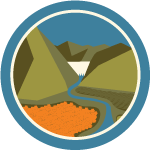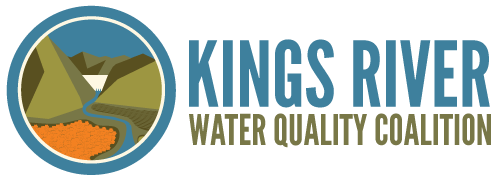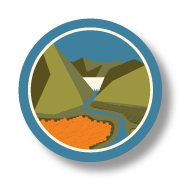Resources
Member Forms/Templates
Nitrogen Management Resources
Irrigation and Nitrogen Management Plan (INMP) & Summary Report
The INMP is required annually for all members with members in a High Vulnerability Area needing certification. This template budgets the planned irrigation and nitrogen applied to field(s) and should be completed and certified pre-season by March 1st. Actual Nitrogen applied should be recorded post-season. The INMP should be kept with your records for at least 10 year and does not need to be submitted to the Coalition.
Tools for Irrigation and Nitrogen Management Plan (INMP)
Below are tools for estimating crop evapotranspiration (ET, inches), calculating the amount of N in irrigation water, CDFA fertilization guidelines and other resources to assist in completing the INMP.
Certification for Irrigation and Nitrogen Management Plan (INMP)
Members with parcels in a High Vulnerability Area are required to have their INMP certified by March 1st annually. Certification can be obtained by an Irrigation and Nitrogen Management Plan Specialist or if the member has attended an approved training program for INMP certification.
Farm Evaluation Resources
Farm Evaluation Template
Download the Farm Evaluation Template or each of its individual parts. An instructional video is available on how to fill our the Template.
Management Practices Evaluation Program
The Management Practices Evaluation Program (MPEP) is a significant component of the regulatory requirements approved by the Central Valley Water Board. In order to implement this requirement in a scientifically sound and cost effective manner, the Kings River Coalition has partnered with 6 other coalitions to form the Southern San Joaquin Valley MPEP Committee.
The MPEP is designed to evaluate the impacts to groundwater quality coming from current farm practices and refine those practices (if necessary) in order to meet water quality standards. The best way to reduce impacts to groundwater quality are to implement best management practices that are specific for each individual farming operation.
Member Deadlines
Updated on May 6, 2020.
Farm Evaluations
| Vulnerability | Farm Size | Completion Date |
|---|---|---|
| All | All | 1 March 2021, Every 5 years |
Management Practice Evaluation Program (MPIR)
| Vulnerability | Farm Size | Completion Date |
|---|---|---|
| All | All | 1 March 2021, Every 5 years |
Irrigation and Nitrogen Management Plan (INMP) Summary Report
| Vulnerability | Farm Size | Completion Date |
|---|---|---|
| All | All | 1 March 2021, Annual |
Irrigation and Nitrogen Management Plan Worksheet (INMP)
| Vulnerability | Farm Size | Completion Date | Certification |
|---|---|---|---|
| High | All | 1 March 2020, Annual | Required |
| Low | All | 1 March 2020, Annual | Only if identified as outlier |
Sediment and Erosion Control Plans
| Vulnerability | Farm Size | Completion Date | Notes |
|---|---|---|---|
| SDEAR*** | Large * | 180 days from approval of SDEAR | Plan maintained on farm and not submitted to Coalition. |
| SDEAR*** | Small ** | 1 year from approval of SDEAR | Plan maintained on farm and not submitted to Coalition. |
* Large Farms – 60 irrigated acres or greater
** Small Farming Operations – farming operations that farm less than 60 total acres of irrigated land within the Tulare Lake Basin Area. A parcel is not a small farming operation if the total acres of irrigated land within the Tulare Lake Basin Area managed by the farming operation and any of its Subsidiary or Affiliated Operations is 60 acres or greater.
*** All farms identified in the Sediment Discharge and Erosion Assessment Report
Maps
Prior to joining the KRWQC, please verify that each parcel you own is within the KRWQC Boundary by viewing the map below. You can search by property address to help you identify whether your property is within the KRWQC Boundary or in another Coalition. Please note that you can only join the Coalition of which your property is within. The Second map identifies areas designated as High Vulnerability within the KRWQC Boundary.
FAQ
Frequently asked questions.
The Kings River Water Quality Coalition is a non-profit joint powers agency established by the irrigation districts in the Kings River service area. It is governed by a board of directors of landowners from each of the districts. Staffing of the Coalition is administered through an agreement with the Kings River Conservation District located in Fresno. The Coalition was formed in 2009 in order to allow growers withing the region a cost-effective avenue to comply with the regulations developed by the Central Valley Regional Water Quality Control Board. The Coalition conducts regional monitoring and reporting and assists members in compliance with regulations. The Coalition is not a regulatory agency. Enforcement of the ILRP is handled by the Central Valley Regional Water Quality Control Board.
The costs are $3.41/acre for parcels in a Priority 1* area, $3.64 for Priority 2*, $3.14 for *None area, and $3.09 for *De-designated area plus a $30 administration fee for all members, which includes paying the State Water Resources Control Board Fee of $1.55/acre. New member acreage fees are comprised of current and prior year parcel designation.
The Coalition is responsible to implement the following on behalf of the individual members
- Representative Surface Water Quality Monitoring
- Representative Groundwater Quality Monitoring
- Aggregation and Summary Reporting of management practices and nitrogen management
- Identification of the impacts to groundwater quality from members’ operations through implementation of the Management Practices Evaluation Program
- Implementation of a Groundwater Quality Management Plan designed to improve current groundwater quality
- Extensive Member Outreach and Education
*Priority 1: The Kings, Kaweah and four other groundwater subbasins were deemed the highest priority, Priority 1, which means their compliance with the NCP was accelerated compared to Priority 2 subbasins. Notices to comply were received by Nitrate dischargers in
the Priority 1 areas in May 2020.
*Priority 2 The Tulare Lake and seven other groundwater subbasins that were deemed the next priority, Priority 2, for compliance with the NCP. Notices to comply are anticipated within the next year.
*None: Parcels outside of groundwater subbasins and NCP priorities.
*De-Designated: Parcels within the former Tulare Lake Bed which has been de-designated for municipal and domestic supply beneficial uses.
Irrigated lands can be covered under an individual discharge permit. The fees charged by the State Water Resources Control Board for individual coverage are significantly more than the fees charged to coalitions. Also, the individual will be expected to implement the monitoring and reporting requirements of the permit. Currently, these fees are expected to be $750 per farm plus $5.00 per acre per year, payable directly to the Regional Board. Laboratory monitoring costs, potential installation of monitoring wells, and other regulatory requirements will only add to this cost.
Failure to participate in the Irrigated Lands Regulatory Program, either as a member of a coalition or as an individual will subject the landowner to administrative penalties by the Central Valley Regional Water Quality Control Board under California Water Code section 13267.
Report irrigated acres within each parcel not your house, shed, roads, etc. We still need the parcel numbers reported but not the parcel acres.
No – joining is voluntary, but compliance with the General Order is mandatory under the regulation. All irrigated operations must join a coalition for coverage or get an individual permit through the Regional Board. Irrigated lands that are currently permitted under the dairy order, or any other Regional Board permit is not subject to this General Order.
Current members can add or subtract additional parcels upon sale, purchase, or transfer of additional farmland. Notify the Coalition to update your membership once a transfer is complete.
The Regional Water Quality Control Board regulates all discharges of waste and requires all irrigated agriculture in the Central Valley to obtain regulatory coverage and conduct monitoring and reporting. This can be done on an individual farm basis by obtaining an individual permit directly with the Regional Board or by joining the Coalition group which conducts regional monitoring and aggregates reporting to the Regional Board. The Coalition also conducts education and outreach and assists members in complying with the Regional Board’s regulation. Complying with the regulation through the Coalition is the most cost-effective option for growers. Growers pay a reduced State fee through the Coalition and monitoring and reporting costs are substantially more if growers were to obtain an individual permit.
Either a landowner or operator can join the coalition and enroll parcels in our service area for regulatory coverage (see Boundaries section for more details on our service area). It is important that all parcels be covered by either the landowner or the operator. Both do not have to enroll and the coalition will only allow coverage by one entity. The open enrollment period for our Coalition ended May 19, 2014. Growers can still join the Coalition, but additional steps are required by the Regional Board in order complete the membership process. Additional details on these requirements are under the Join Coalition tab of the website.
The General Order covers discharges to both surface water and groundwater and makes no distinction between the two for regulatory coverage. All members will be required to prepare and submit a Farm Evaluation Plan, a Nutrient Management Plan, and, if applicable, a Sediment and Erosion Control Plan. The requirements for implementation, preparing and submitting these plans vary depending on the collective size of the farming operations (above or below 60 total acres) and whether the parcels are located in a high- or low-vulnerability area. Members will be required to participate in education and outreach events concerning water quality. Either an electronic or hard copy of the General Order must be maintained where farm records are kept.
The Coalition will identify vulnerable areas when it prepares a Groundwater Assessment Report (GAR). The GAR will include a comprehensive study of available groundwater data, soil conditions, and other factors that potentially lead to the leaching of unused agricultural chemicals into groundwater. High vulnerability areas are regions where nitrates exceed the maximum contaminant level (under drinking water standard) for groundwater, while low vulnerability areas are areas where the risk to groundwater is reduced. The determination of the high and low vulnerability areas should occur approximately one year after the adoption date of the General Order, which occured on September 19, 2013. While the Coalition prepares this report, final determination of High and Low Vulnerable Areas will be subject to approval from the Regional Board.
Under the General Order, all members will be required to submit a Farm Management Plan. The Coalition will provide all members with a template for the plan. The plan will be submitted to the Coalition and the member will maintain an on-farm copy for Regional Board inspection, if requested.
The Coalition will summarize the information in the Farm Evaluations received from members and submit a summary report to the Regional Board. The summary report will not include parcel- or member-specific information. If your lands fall within the high vulnerability area, members will be required to complete a certified Nutrient Management Plan and submit a summary to the Coalition. Again, the Coalition will provide all members with a template for the plan. These plans focus on nitrogen-based fertilizers and compare the amount of applied nitrogen against the crop nitrogen requirements. The plan can be certified by a Certified Crop Advisor, Pest Control Advisor, Soil Scientist, or Natural Resources Conservation Service (NRCS)-certified Technical Service Provider. Plans may also be self-certified under California Department of Food and Agriculture (CDFA), the NRCS, or the UC Cooperative Extension.
If lands fall with the low vulnerability area, members with be required to complete but not submit the Nutrient Management Plan and will maintain an on-farm copy for Regional Board inspection, if requested. Nutrient Management Plans in low vulnerability areas do not require certification.
The Coalition will summarize the information in the plans received from members in the high vulnerability areas and submit a summary report at a township level of detail to the Regional Board. The summary report will not include parcel- or member-specific information. All Nutrient Management Plans need to be kept on-farm and made available to Regional Board staff if so requested. If your lands have a potential for the run-off of sediment or erosion, you will required to prepare a Sediment and Erosion Control Plan. This plan outlines practices to be implemented to control sediment or erosion during irrigation or storm events.
How To Join
To Join the KRWQC please follow the steps below
The initial open enrollment period passed on May 19, 2014. In order to be accepted as a new member of the KRWQC, a membership application process which includes verification of parcel eligibility and owneroperator contact information is necessary. The current process for joining the KRWQC post open enrollment period includes:
- Download, complete, and submit a KRWQC Post Open Enrollment Membership Application. (Linked below)
- Upon receipt of the completed Membership Application and Fee, the KRWQC will issue a Member ID with login instructions to access the KRWQC web portal.
- Access the KRWQC web portal to change your temporary password and verify enrollment information.. Review reporting requirements and timelines to determine your user Irrigated Lands Regulatory Program compliance status.
*The KRWQC Member ID is a unique account number utilized for membership identification in order to safeguard personal and/or operational details.


